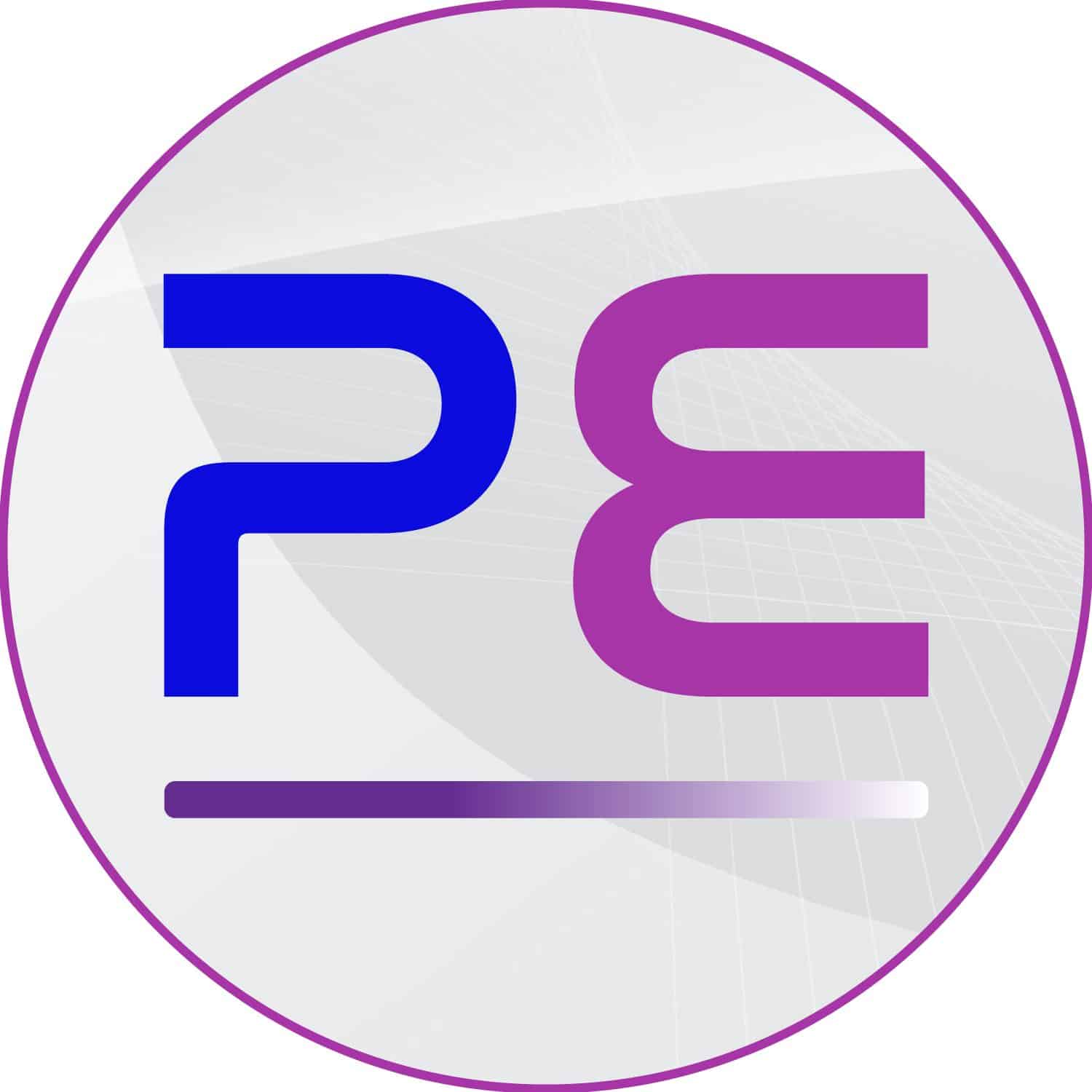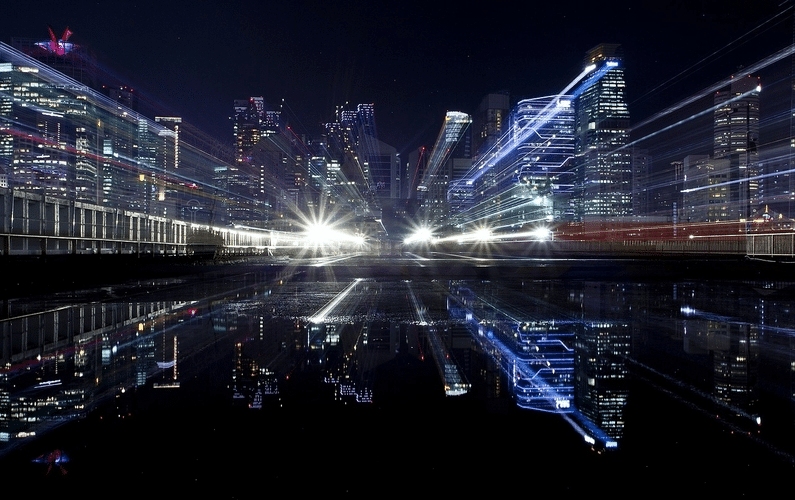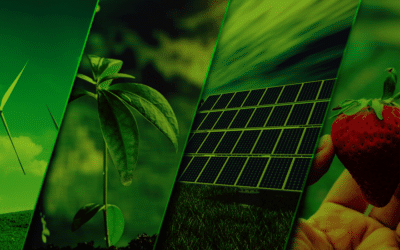In this video episode, Dr. Know-it-all Knows provides Tesla Full Self Driving reaction on request by dissecting a critique of Brad Templeton’s Forbes article.
According to the Forbes article, Tesla has another thousand times further to go with solving full self driving, and he identifies where he differs.
How does Dr KIA’s Tesla Full Self Driving Reaction relate to Peace Evolution?
When considering Are Electric Cars Eco Friendly Living? and Introducing Healthy Sustaining Life On Earth it is to everyone’s advantage to have all perspectives. Even where people have different views and even disagree, ensuring the information isn’t one-sided and to maintain a balance.
Enjoy the video from Dr. Know-it-all Knows as he provides his Tesla Full Self Driving Reaction to the Brad Templeton article.
Here is a pseudo extract transcript of the video.
Exponentials and orders of magnitude are notoriously difficult for humans to understand. This was why I found Brad Templeton’s recent Forbes article rather interesting. Tesla is this close to solving full self-driving according to him. They only have a thousand times further to go.
Hey y’all it’s Dr. Know-it-all.
This video is thanks to Conrad Schmidt for pointing out the Brad Templeton article to me and asking for my reaction.
So, uh, since Steven Mark Ryan over on Solving The Money Problem has had a really good run of doing reaction videos, I thought I would give it a try. Now admittedly this is an article and not a video so it may not be quite as exciting to look at the text as opposed to watching a video.
Dr KIA’s Tesla Full Self Driving Reaction Request
I’ll give it a shot and we’ll see what happens. Also, I want to make a note, I wrote down notes as I was reading the article so it was actually real-time but of course, I’m reading off of notes right now.
So let’s start with the title. I understand what he’s talking about but hadn’t really thought about it in the way he’s discussing it, before, and it’s actually a little bit depressing. If you realize, you’re chasing the nines at least according to his contention that Tesla needs to hit 99.9999% perfection.
Currently, they’re at 99.9 percent of perfection, or good enough. I suppose I immediately upon reading the title thought I might take some issue with that because who knows that 99.99 is not perfectly fine. So his assertion that it might be three or four more digits was just his assertion and we’ll get into that later as I continue to read the article so of course, the article relates to the full self-driving beta rollout of Tesla that happened on October 22nd.
I believe anyway this article is dated October 23rd, which I have to admit puts it in the dinosaur years with Tesla because everything happens so fast with them. I also have to admit that right around the same time, I think on the 23rd, I also released an article saying what on earth is Tesla doing releasing the software. I got so much flack on the Internet that I had to go and retract it in another video. And kind of say like oops I’m sorry you guys were right.
Certainly, full self-driving is updating rapidly. So even being about 17 or so days old at the time I film this, there’s you know, some out of date points, but still, I think the arguments that he makes are quite valid to examine because there are some specious arguments and it’s worth pointing them out.
Dr KIA’s Tesla Full Self Driving Reaction Points
First of all, Brad Templeton says this is not actually full self-driving, even though it’s called full self-driving. It’s more like autopilot for city streets. I completely agree with this (Dr KIA’s Tesla Full Self Driving Reaction.) I think it’s dangerous for Tesla to proclaim this is full self-driving when it’s not there yet. I wish they had another name for it. Uh, even autopilot is a problematic term.
I think it’s in Germany where they’re not allowed to use that term because apparently, it sounds too much like it’s going to fly itself. Right of course, with every iteration and especially with the full self-driving beta it’s less of an issue. Because it’s much more complete, but still you know this absolutely requires attention on the driver’s part and you have to agree to that before you’re even allowed to download and use the software.
One thing that Brad notes is that full self driving still doesn’t do driveways or parking lots and I’m actually curious about that again. I’ve got my Tesla Model 3 on order. I’m curious if anybody else has used the beta, if they notice that it actually does work with driveways or parking lots now. I’d be curious to find out, but anyway according to Templeton that’s not the case yet (Dr KIA’s Tesla Full Self Driving Reaction.)
Brad then goes on to compare Tesla in 2020 to Waymo in 2010, which I was like what is he talking about? So it turns out that he actually worked for Waymo. Um, which means I think there’s a decent chance that he’s being biased here, but even he notes that they were using lidar and completely explicitly mapped areas to do their testing (Dr KIA’s Tesla Full Self Driving Reaction.)
So come on, I mean that’s an unfair comparison between the two of them over the decade and obviously as most of you know Tesla only uses vision and radar and sonar and doesn’t use lidar at all. And they can pretty much do it everywhere without having to have a walled garden of completely mapped out stuff (Dr KIA’s Tesla Full Self Driving Reaction.)
Templeton then notes that they have driven in the day and the night in full self-driving but no harsh weather. As far as I know, I haven’t seen any snow driving yet. I have seen some rain driving and it seems to handle that pretty well. But it really will be interesting to see how full self driving deals with a sizable snowstorm that will be a significant challenge. And by the way who’s brave enough to try that? Anybody wants to risk their 50 or 60 or $70 000 car on a snowy road with autopilot full self driving (Dr KIA’s Tesla Full Self Driving Reaction.)
Next he discusses disengagements, and this is a quote from, uh, Templeton. “While no statistics are available about how frequently those are needed it appears to be reasonably frequent.” I think it should be frequent, actually, anyway. I don’t agree with this. (Dr KIA’s Tesla Full Self Driving Reaction.) I think that disengagement, even in the earliest test was not all that frequent, and often it just showed that the driver was being overly cautious and not that the car was necessarily going to get into an accident.
Uh, and certainly in the weeks since the article, the full self-driving has gotten significantly better and it’s demonstrably better. So you know as many like you, know half-hour-long full self driving with no disengagement videos show. So I would say without better statistics this is kind of a specious argument he’s making here again.
Templeton here mentions Waymo and Nuro and Cruise as needing no supervising driver on board. This is a bad faith argument (Dr KIA’s Tesla Full Self Driving Reaction.) Again these are only available in tiny walled garden areas like a couple of square miles in Phoenix for Waymo and San Francisco for Cruise. And Cruise isn’t even operating yet. So it’s kind of a bad faith argument to make a comparison between that and driving on unmapped roads all across the United States at this point.
And soon to roll out to the world at large. So now he gets to referencing the title of 99.9 percent. “This is not a precisely calculated number but a proxy that seems to work most of the time. In reality, we would want to calculate how often it is needing interventions.” So I agree about that, but then your title is more clickbaity than it is any kind of precise argument or indication of real progress (Dr KIA’s Tesla Full Self Driving Reaction.) So honestly, it kind of diminishes the article and makes it seem a little more like a buzz-feed article than an actual, you know, Forbes quality article.
After this Templeton turns to five points, five questions, and inserts his thoughts about the answers to those questions.
Reaction to Point Number One
How frequent are disengagements again to quote him “One can’t tell from just these videos” but he does pull out some real statistics next which I actually really approve of (Dr KIA’s Tesla Full Self Driving Reaction.) I did not know all of these statistics as precisely as he does.
Apparently, humans make a bad mistake that could cause an accident about every 100 000 miles or 8 to 10 years of driving for a normal person. So much of the time we’re lucky. Right we go into the wrong lane and nobody’s there and so we don’t have an accident but that happens about every 100 000 miles.
As far as insurance claims, that happens about every 250 000 miles or every 25 human years. As far as police intervention, in other words, a significant accident, that’s about every 500 000 miles or 40 to 50 human years.
And fatalities are every 8 000 years of driving or about 20 000 years on the highway. So for individuals, it’s a very, very small chance that you would be involved in a fatality. Thank goodness, right thank goodness, human drivers are relatively good.
But then Brad goes on to state “Driving all day without needing an intervention seems very impressive particularly to those new to the field. But it’s a very long way from where you need to be for actual full self-driving rather than monitored driver assistance.”
But he has zero statistics on whether or not full self-driving is better or worse in this case (Dr KIA’s Tesla Full Self Driving Reaction.) He just has a statement that he’s making sound like fact. But really are we a long way off? How far are we off? What are the full self-driving statistics that we can compare to this human driving? He doesn’t have any of that.
Reaction to Point Number Two
He deals with, is it okay to test with untrained drivers? Again I worried about this too in the linked videos and people crushed me about it. So anyway, I’ve changed my mind about it. Let’s just put it that way.
But he compares the Tesla driving to the Uber fatality, the very unfortunate Uber fatality that happened with a poorly trained driver trainer watching a video rather than paying attention to the road and killing a pedestrian. And how drivers of Tesla will do similar things. Okay yes, but Uber paid this person and it was their job and it was Uber’s responsibility for the training.
This is completely different from Tesla. You are responsible right. This is a driver assist thing, no matter whether it says full self-driving or not. It is a driver assist feature you are responsible for. You are legally responsible for your car.
So this is not an apple to apple’s comparison at all, plus of course full self-driving beta is clearly identified as a beta and everybody knows a beta has not completed software (Dr KIA’s Tesla Full Self Driving Reaction.) So people should be extra careful in that case.
At this point, Templeton references an article stating “Statistics show that Tesla drivers using autopilot on the highway are not as safe as drivers not using autopilot, but only moderately less safe.” Let’s look at that article. Oh, he wrote the article, and oh, when you actually read the article you find out that it’s just guesstimation calculations. That kind of shows, that on freeway miles Teslas are slightly less safe.
Assuming that he guessed all of the numbers correctly and his calculations are correct, that’s a really disingenuous thing to state. Like, it was a scientific study or something in this article, don’t call it statistics if it’s just guessing. And also clearly identify that you were the writer of the previous article, not some full-blown scientific study that actually has real statistics (Dr KIA’s Tesla Full Self Driving Reaction.) Boo on Templeton for that one for sure.
Of course Templeton does state next that having careful drivers test the software for free, well actually we pay for it right. It’s a good thing because there are many, many more miles of curated data fed to the machine learning beast. Whereas with companies like Waymo or Cruise or Nuro that have to pay their drivers to drive these miles. So of course this saves Tesla millions of dollars and they get a lot more edge cases from people driving random places (Dr KIA’s Tesla Full Self Driving Reaction.)
Reaction to Point Number Three
Is about corner or edge cases. So Templeton states that even at 99.9 percent, which is his numbers; there are still many, many edge cases even on normal streets. Yeah, I agree with that (Dr KIA’s Tesla Full Self Driving Reaction.) Right, there’s random stuff, there’s a tree that falls into the road or a truck is parked someplace, or a dog runs out, or who knows.
There’s a lot of edge cases that come along. But then, Templeton states that Waymo has already taken care of this. Now come on, now all right, again we’re inside a very carefully mapped walled garden so absolutely it’s going to do better because it’s basically given all. You know it’s given all the secrets so this is not a comparison that’s fair at all (Dr KIA’s Tesla Full Self Driving Reaction.)
If you see my linked video you will see that this is not a scalable thing for Waymo or Cruse or anybody else. Whereas Tesla’s is scalable and actually as it scales it gets better so that’s an opposite thing so it’s a very, very poor comparison to make (Dr KIA’s Tesla Full Self Driving Reaction.)
Then Templeton states that we’re only one tenth of one percent, 0.001 of the way there. Again this is totally specious 99.9 is 99.9 percent. You don’t start at 99.9 and have to get to 99.9999% I think that’s right. You start at zero to get there so by his logic, we’re about halfway there. Right, that’s three nines out of six nines that you need. So that’s to say, that we’re a thousand times further away, is completely bogus and boo on him for stating that (Dr KIA’s Tesla Full Self Driving Reaction.)
In just a minute I’m going to get to points four and five.
But first, if you enjoy the video, definitely make sure you hit the thumbs up button because YouTube’s algorithm depends on that for recommending it. And if you enjoyed this kind of thing be sure to subscribe so you can watch more of these. Also a shout out to my patrons on Patreon thank you guys so much. I have a couple of new ones since last time, thank you everybody. I truly appreciate it.
Also a quick shout out to Zenlee for doing my silly music. For me he’s actually a super talented musician and producer, so please check him out and show him some love on his YouTube channel.
If you’re in the market for a new Tesla, feel free to use our referral link in the description, and we both get 1000 free supercharger miles so that’s a win-win.
Reaction to Point Number Four
Is about maps and lidar. So Templeton is still stating that not using lidar is controversial. I think that issue has been put to bed, if nothing else. Getting to full self-driving, FSD 2 has really put that issue to bed. Vision seems to work just fine and it’s much less fragile and it’s much, much, much cheaper. And as Elon Musk said, it is a crutch to use lidar. It’s not going to get you everywhere because again, you have to map out every single place you’re going and that’s very expensive and time consuming.
And frankly, it changes all the time, so doing it on the fly is a much more reasonable solution (Dr KIA’s Tesla Full Self Driving Reaction.)
If you check out my trajectory projection video up there you’ll see that vision is enough to create a false, false, lidar map. A 3d map of surroundings. It’s also super robust, it can do it in real time, and it’s continuous. So it keeps track of things and it doesn’t lose them every frame. So it is effectively creating a map and it’s doing a better job because it’s a more flexible map, because it’s doing it right now, instead of depending on something that was done before.
As far as mapping is concerned, what he’s talking about here, at least, I think he doesn’t say it specifically, but I believe he’s talking about extremely highly detailed lidar maps of areas not like Google maps. Right, Google maps that kind of stuff exists all over the place already, but he argues that “It is much too soon to think about doing without them, the maps.”
But full self driving beta is showing that this is not at all the case (Dr KIA’s Tesla Full Self Driving Reaction.) Again the cars handle these new situations and unmapped areas actually extremely well and their lower level mapping that they do, achieve as they drive, in certain areas helps them and other cars as they drive in it.
And they encounter those situations again, so they can’t improve but they just don’t need those super highly detailed fragile maps. Templeton argues that perfect on-the-fly mapping is not possible. So maps are needed, but yeah, but lower resolution maps are adequate for full self-driving because they can be filled in by on-the-fly calculations.
He shows one bad example, but that’s not statistics, that’s an anecdote and also this was the first day of the new beta release and a beta is never promised to work properly at all. So you know it’s getting better and it uses these cases in fact to train itself.
And so I think that this is again a specious argument to say that we have to have high resolution maps (Dr KIA’s Tesla Full Self Driving Reaction.) I do not believe that, that’s necessary.
Reaction to Point Number Five
Is this even legal? So there’s some merit to this question, but I think the way that he goes about it is not the right way of approaching it. So what he notes is that California requires a special permit to train and or use a self-driving car and that makes sense. If you’re doing it again when you’re sitting in the back seat with your laptop or something.
But Tesla’s full self-driving is not stated to be that even though it says full self-driving and I think the name is bad. It’s clearly a driver assist feature so things like autopilot, or adaptive radar cruise control, or things like that are driver assist features, and they do not require special permitting in California. So they are legal and it’s quite clear even though it says full self driving, it’s quite clear when you read the agreement that you are responsible and you have to keep your hands on the wheel, etc, etc.
You have to be paying attention to the road. So this is still driver assist. Very much so. It’s definitely legal in California in this case. Yes, the name is kind of goofy, but regardless of that in terms of legality, yes, it’s definitely legal so that’s a species argument (Dr KIA’s Tesla Full Self Driving Reaction.)
Now I think there’s an ethical argument to be made and that was what I said in my original video and got shot down, was that you’re putting your drivers at risk, but honestly given how good it looks, it appears to be like it might actually have some safety factors involved. So you know, I think there’s an ethical issue, sure, but a legal issue, no because the driver is definitely still legally responsible for the car.
Dr KIA’s Tesla Full Self Driving Reaction Conclusion
So what are my overall thoughts on this article?
I think the title is click bait, boo on that. That’s Forbes, they shouldn’t be doing that (Dr KIA’s Tesla Full Self Driving Reaction.)
I think that Templeton believes he’s arguing in good faith in the article but he also is clearly biased towards Waymo and Cruise and Nuro.
Uh, that they’re somehow at the same level or actually, he’s claiming they’re better than Tesla. They are not, they have fully mapped walled garden areas that they can drive within that are very fragile to any changes. That is not the same thing as what Tesla’s doing. Tesla is driving everywhere around the United States and soon around the world without even necessarily having to have been there before, and mapped it.
So that is a whole different ball game and Tesla is leaps and bounds ahead. This is something that is scalable whereas Waymo and Cruse, etc, are not scalable, and using the method that they’re doing I think it’s quite clear that Tesla has proven that vision plus radar and sonar systems can completely map adequately on the fly.
Legally the driver is still responsible up until the day the car no longer needs them. At that point it’s a whole different ball game, but at this point it’s absolutely legal because it’s a driver assist package.
And finally we are at least halfway to solving full self driving. By Brad’s own logic, if we’re 99.9 percent of the way to 99.9999, we are not one tenth of one percent of the way there, we’re very, very close and for most situations we’re actually already there.
I hope you enjoyed this episode and my Tesla full self driving reaction.
Until next time bye-bye.









